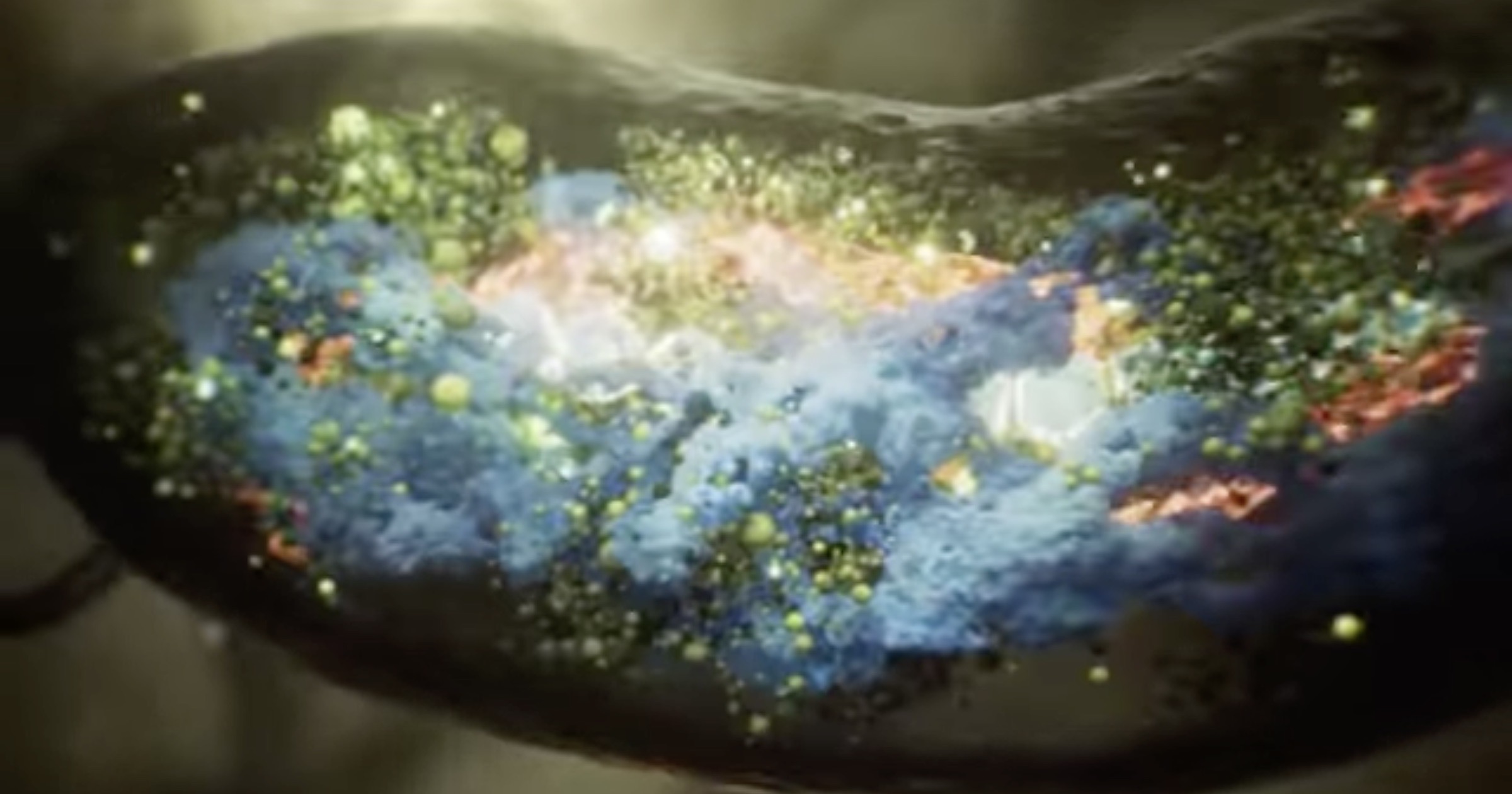 Intelligent Design
Intelligent Design
 Life Sciences
Life Sciences
Wonderful Microbes Are the Planet’s Ecosystem Engineers

Respect for bacteria is growing. Biochemist Michael Behe’s latest video in the “Secrets of the Cell” series shows how magnetotactic bacteria use molecular machines to build their magnetosomes. These allow them to navigate using the Earth’s magnetic field. Indeed, the few pathogens among bacteria give a bad rap to the majority that do wonderful things — for us and for our environment. Equipped with nanoscopic machinery, they are ready to help. In posts today and tomorrow, I’ll offer some illustrations.
Industrial Strength Lock Pickers
Environmentalists are justifiably concerned about vast quantities of industrial chemicals ending up in our drinking water. It’s a huge and growing problem, according to news from the University of California at Riverside.
Per- and polyfluoroalkyl substances, or PFAS, are a group of over 9,000 chemicals used in countless industrial processes and commercial products since the 1940s. As a result, PFAS have found their way into the water cycle and are now found in virtually every water source. These chemicals contain a bond between fluorine and carbon atoms that is the strongest single bond known, rendering PFAS non-biodegradable and resistant to conventional water treatment methods. [Emphasis added.]
These durable chemicals can work their way into our tissues, leading to thyroid and liver problems and some types of cancer. But like Superman to the rescue, in flies a Clark Kent microbe, “shattering the ultra-strong carbon-fluorine bond” and giving hope to a distressed world.
Is this microbe hard to find? No; it’s all over the place. It just needs anaerobic conditions. Chemical engineer Yujie Men built on earlier work to learn how the microbes do it.
Microbes capable of doing this type of defluorination are not rare. Using activated sludge — microbial communities commonly used in wastewater treatment facilities to break down and remove organic matter — and an anaerobic condition, the researchers successfully repeated their earlier experiment with more structurally similar PFAS.
The team believes that this step in defluorination can be augmented by using additional species of microbes, leading to complete biodegradation of these industrial waste products.
“The possibilities are endless across industries to leverage this leading-edge recycling process,” said Hal Alper, professor in the McKetta Department of Chemical Engineering at UT Austin. “Beyond the obvious waste management industry, this also provides corporations from every sector the opportunity to take a lead in recycling their products. Through these more sustainable enzyme approaches, we can begin to envision a true circular plastics economy.”
Nitrogen Fixers
Some bacteria are well known for being able to “fix” nitrogen at ambient temperatures, converting it to compounds useful to plants. It would revolutionize agriculture if humans learned the trick. These nitrogen-fixing bacteria, primarily cyanobacteria and rhizobial species found in symbioses with the roots of legumes like beans and peas, have a lock picker called nitrogenase that can take apart the tough triple bonds of atmospheric N2 molecules. Biochemists still can’t understand how they do it. Agricultural engineers in the manufacture of fertilizer require high temperatures and pressures to break molecular nitrogen’s triple bonds. The only other natural energy source powerful enough to do it is lightning. Microbes, which perform 90 percent of our planet’s nitrogen fixation, make it look easy. Since before man began planting crops, bacteria been making nitrogen available for the soil everywhere, adding to the lush greenery that not only beautifies our planet but helps regulate its climate and cycles of water, oxygen, and carbon.
Plastic Destroyers
Landfills pile up with plastics that our throw-away society discards. Environmentalists warn that these plastics can last for decades and leak toxic chemicals into the soil and into our water supplies. But take heart: there are microbes that can eat plastic. Let them do the cleanup work!
The University of Texas at Austin announces, “Plastic-eating Enzyme Could Eliminate Billions of Tons of Landfill Waste.”
This discovery, published today in Nature, could help solve one of the world’s most pressing environmental problems: what to do with the billions of tons of plastic waste piling up in landfills and polluting our natural lands and water. The enzyme has the potential to supercharge recycling on a large scale that would allow major industries to reduce their environmental impact by recovering and reusing plastics at the molecular level.
Watch the video to see how this works:
The engineers began with microbes that make a natural enzyme called a PETase that can break down polyurethane. They tweaked it to work at the lower temperatures found in landfills. It works! And it’s fast. The bacteria degrade large plastic pieces into tiny particles that can be recycled to make new plastic products. Now, the UT scientists only need to figure out how to scale up production and let this bacterial enzyme accomplish what humans have been unable to do. “Biological solutions take much less energy,” they say. And such solutions are efficient. “In some cases, these plastics can be fully broken down to monomers in as little as 24 hours.”
Landfill Gluttons
Arizona State also reports that landfill trash is a feast for microbes. Living in a cast-off pile of useless debris “is, in reality, a complex ecosystem, teeming with microbial activity.” The microbes emit carbon dioxide and methane as waste, but researchers at ASU think those greenhouse gases could be captured and used for fuel.
“I think of a landfill as like a big carbon buffet to these microorganisms,” says [Mark] Reynolds, a researcher in the Biodesign Swette Center for Environmental Biotechnology. “Our trash is mostly paper-heavy and it’s really rich in cellulose and hemicellulose. These are readily degradable under anaerobic (oxygen-free) conditions.” …
By better understanding the behavior of these methane-producing microorganisms, researchers hope to improve the capture of this vital resource and possibly limit the escape of methane and CO2 — two potent greenhouse gases and leading contributors to climate change — into the atmosphere.
Tomorrow, “‘Bacteria Are Incredible’ — Here Are More Illustrations.”
